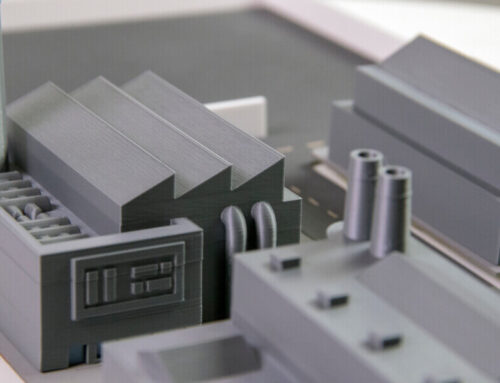In the world of architecture, the process of bringing an idea to life involves a multitude of steps, from initial concept sketches to the final construction. Among these crucial steps is the creation and utilization of massing models.
Massing models serve as a fundamental tool for architects and designers, allowing them to visualize and refine their ideas, communicate with clients and stakeholders, and ultimately shape the built environment. In this article, we will delve into the significance of massing models in architecture, exploring their purpose, types, and the transformative impact they have on the architectural design process.
Defining Massing Models
Massing models are three-dimensional representations of architectural designs, primarily focusing on the overall form, size, and spatial relationships of a building or structure.
They serve as a bridge between two-dimensional drawings and the physical realization of a project. These models are instrumental in capturing the essence of a design and conveying it to various parties involved in the architectural process.
The Purpose of Massing Models
Conceptualization and Exploration:
Massing models play a vital role in the early stages of design. They help architects explore and visualize design concepts in a tangible form. By creating physical representations, architects can quickly experiment with different massing options, helping them discover innovative and functional solutions.
- Scale and Proportion:
Accurate scale and proportion are crucial in architectural design. Massing models enable architects to assess how a building will relate to its surroundings and human scale. This ensures that the final design will be harmonious with the environment and the intended users.
- Design Communication:
Massing models are indispensable tools for communicating design ideas to clients, stakeholders, and project teams. These physical representations provide a more accessible and intuitive way to convey complex design concepts compared to traditional blueprints or CAD drawings.
- Contextual Analysis:
Architects use massing models to study how a proposed building interacts with its urban or natural context. This analysis includes considerations of sunlight, shadow, wind flow, and views, helping architects make informed decisions that enhance the building’s performance and integration within its environment.
Types of Massing Models
- Conceptual Massing Models:
These models are often the first step in the design process. They are simplified representations used to explore initial ideas and concepts. Conceptual models focus on basic forms, volumes, and spatial relationships.
- Site Massing Models:
Site massing models incorporate not only the building but also the surrounding context, including neighboring structures, topography, and landscape. They help architects understand how a building fits within its specific location.
- Presentation Models:
Presentation models are highly detailed and refined. They are used to convey the final design to clients, investors, or the public. These models are often made with high-quality materials and may include intricate interior and exterior details.
The Transformative Impact
Massing models have transformed the architectural design process in several ways:
- Enhanced Creativity:
Massing models encourage creative thinking and experimentation, fostering innovation in design. Architects can physically manipulate models, facilitating the discovery of unique solutions.
- Improved Decision-Making:
By providing a tangible representation of a design, massing models help architects and stakeholders make informed decisions early in the process, reducing the likelihood of costly design changes later.
- Client Engagement:
Clients and investors often have difficulty interpreting architectural drawings. Massing models provide a tangible means of engaging clients in the design process, helping them understand and connect with the project.
Conclusion
Massing models are a fundamental tool in the architect’s toolkit, offering a tangible way to conceptualize, communicate, and refine architectural designs. From conceptual exploration to final presentations, these models play a vital role in shaping the built environment.
As technology continues to advance, the integration of digital tools and virtual reality further enhances the capabilities and impact of massing models in the field of architecture. With their ability to bridge the gap between imagination and reality, massing models will remain an indispensable asset in the ever-evolving world of architectural design.










